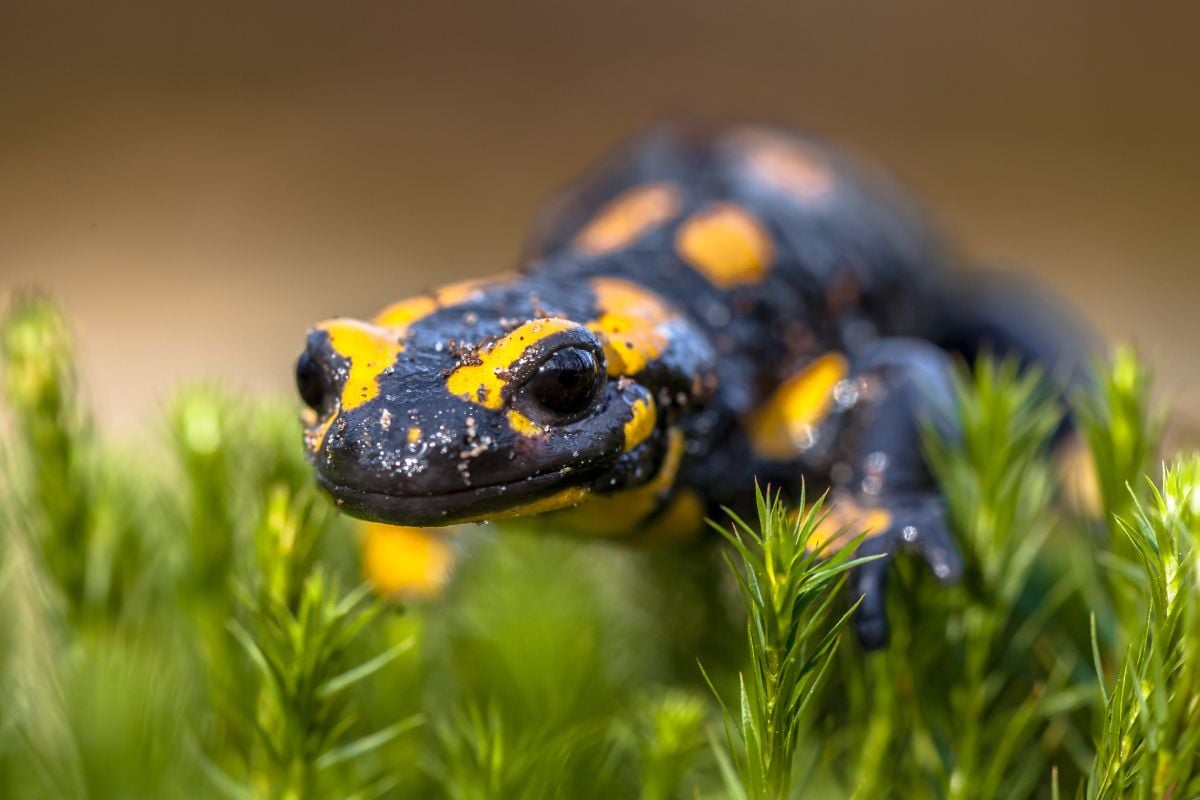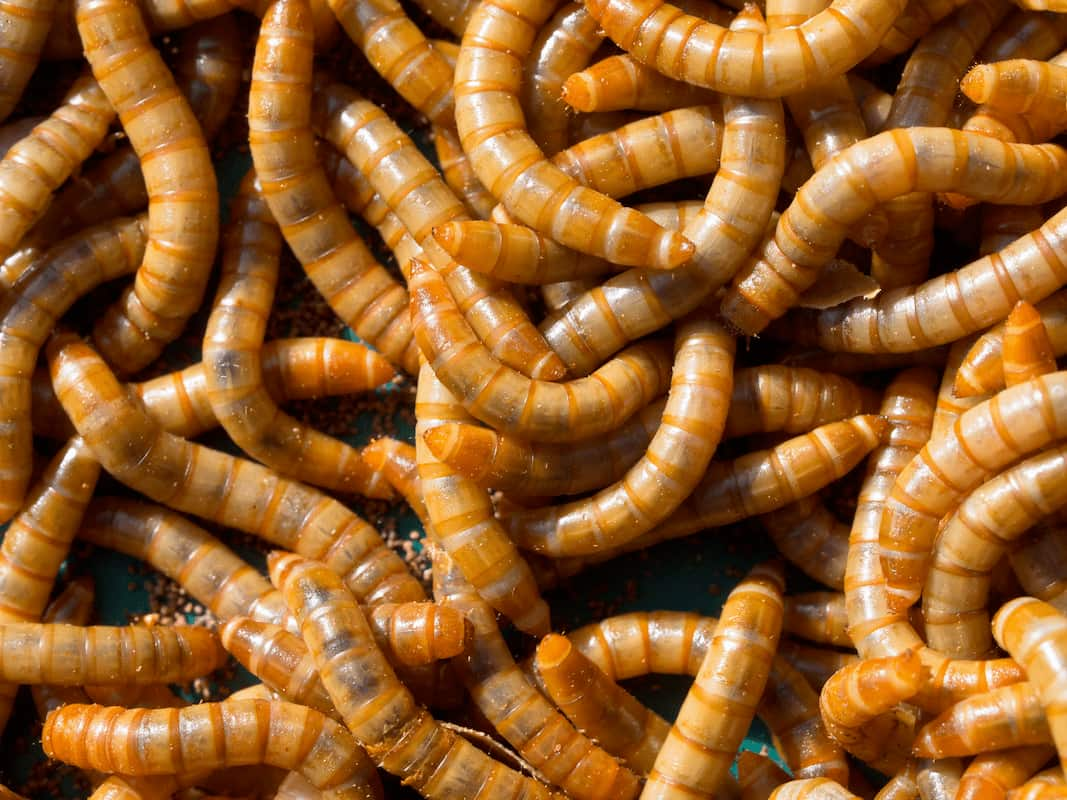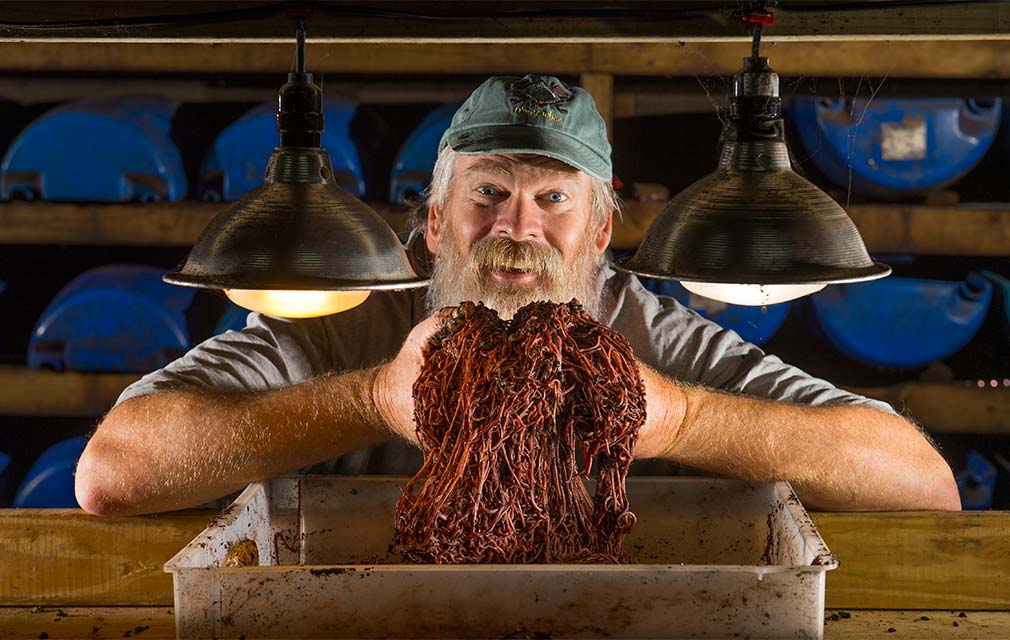 Bird lovers are always looking for a way to capture their backyard wild birds’ interest. Mealworms make a terrific treat. Whether the mealworms are live or dried, they are nutritious and popular with most outdoor birds. Why feed wild birds mealworms? How often? Which types of birdfeeders are best for mealworms? And how do you store mealworms?
Bird lovers are always looking for a way to capture their backyard wild birds’ interest. Mealworms make a terrific treat. Whether the mealworms are live or dried, they are nutritious and popular with most outdoor birds. Why feed wild birds mealworms? How often? Which types of birdfeeders are best for mealworms? And how do you store mealworms?
Benefits of Feeding Meal Worms to Wild Birds
Mealworms are the larvae stage of the Darkling Beetle. These cream-colored grubs are high in fat and protein. Wild birds need extra fat in winter to stay warm. They need extra protein when they are:
- young and growing
- laying on feathers
- preparing to lay eggs
- feeding chicks
In a pinch, new parents will feed seeds to their youngsters in the nest. Most prefer to provide insects to their babies. Mealworms will do nicely.
Frequency of Feeding Mealworms
Mealworms are a treat. Therefore, offer live mealworms in small quantities, occasionally. Your wild birds will come to depend on your bird feeders stocked with seeds. This is true whether you feed year-round or just in the cold seasons.
During the spring, you can increase the frequency of feeding mealworms. Laying eggs and feeding youngsters is protein-intensive. Did you know that 80% of bird families worldwide include some insects in their diets?
If you are feeding dried mealworms: they can be offered year-round but in small quantities. You can place dried mealworms in their own feeder or mix them in with seed or suet.
Your birds might not take to dried mealworms right away. You can tempt the birds to start eating them. If sitting out on their own, dried mealworms can be moistened a bit to make them more appealing. However, do not leave damp dried meal worms out for more than a day or two. As soon as one bird catches on about the dried mealworms, its friends will partake, too.
Best Types of Feeders
There is no hard-and-fast rule on the best type of feeders for mealworms. Some bird enthusiasts use simple, hand-made bird feeding trays. However, the best types of mealworm feeders will have these attributes:
- sides tall enough so the meal worms don’t crawl out
- a roof, “baffle” or rain guard
- drainage holes
- tamper-resistant features
 This picture is an example of an ideal feeder for mealworms. The feeding area is protected from rain, so the mealworms won’t drown or get moldy in a downpour. In case some water gets in, there are drainage holes. The ledge is deep enough that the mealworms can’t crawl away. The feeder discourages squirrels if placed in the right spot on the window.
This picture is an example of an ideal feeder for mealworms. The feeding area is protected from rain, so the mealworms won’t drown or get moldy in a downpour. In case some water gets in, there are drainage holes. The ledge is deep enough that the mealworms can’t crawl away. The feeder discourages squirrels if placed in the right spot on the window.
Many hanging birdfeeders are also suitable. Bird feeders with lids or squirrel-resistant domes (baffles) protect the food from rain. Ideally, place the mealworms on a tray. Laying them out helps the birds spot the wiggling (if they are live) and easily get at them.
Storing Mealworms
How you store the meal worms depends on whether they are dried or alive.
If they are dried, keep them sealed in their bag. Dried mealworms will last a very long time if stored without air circulation.
 Live mealworms will last many months; however, you need to keep them cool. Warm mealworms will mature quickly into pupae and then beetles. Keep them at around 40 degrees. Since this is the interior temperature of a typical refrigerator, put them in the fridge.
Live mealworms will last many months; however, you need to keep them cool. Warm mealworms will mature quickly into pupae and then beetles. Keep them at around 40 degrees. Since this is the interior temperature of a typical refrigerator, put them in the fridge.
Before refrigerating, you can make them grow a bit larger by feeding them. Small slices of potato, fresh carrot pieces and little bits of orange rind are perfect. Never add more than they can eat before it goes moldy. If the food gets moldy, your mealworms will die. When they have fattened up a bit, put them in the fridge and they will go dormant.
The ideal mealworm home is a plastic container about the size of a shoebox with a lid. Punch very small air holes in the top. The best mealworm bedding is wheat bran. Order live meal worms online from Uncle Jim’s Worm Farm. Place the mealworms in the container, then add enough wheat bran to half-fill the container. Leaving lots of air space between the mealworms and the lid discourages escapes.
If you are feeding them to the wild birds regularly, the mealworms will get used up before they turn into pupae or beetles. If you spot pupae or beetles in there, simply release them outside.
Where to Get Mealworms
Uncle Jim’s Worm Farm offers both dried and live mealworms. We have been raising various types of worms for 40+ years, so we are experts. Our mealworms are free of pesticides and chemicals, so they will not harm your precious backyard friends. Live mealworms are guaranteed to arrive alive year-round or we will re-send them.









22 thoughts on “How to Feed Mealworms to Wild Birds”
Hi,
I am looking for some advice please. For some reason our Robins , Wagtails and even Starlings refuse to eat our dried mealworms which are imported from the far east. We have been feeding them for about 2 years without any problem.
What can be wrong ?
Regards
Colin
Im not sure about the meal worms, but I know that I can never get them to eat Niger seed. I read that this was because they have to be heated at a high temperature to ensure they are free from disease. It must also destroy the taste? I wonder if because they are imported from the far east and have to go through a process before coming to the states might be the problem?
I bought two containers of meal worms. I have a mama and four babies on my porch in a wonderful 5’ft wooden box that is on my porch that has a ceiling for protection from the rain and wind. The first box of meal worms I put into this enclosure, and the worms were gone in a day. I saw the mama feeding the babies the meal worms. I put the 2nd box in the fridge, and when I went to get them, all the worms were on top of the soil (or whatever it is) not moving and appeared dead. What happened to them??? Should I put these dead worms out for the mama to feed the babies?? Thanking you in advance for your help.
Mealworms go dormant when cold
If I take them out of fridge as I need them they will warm up and start squirming
I got the mealworms and mixed w my birdseed and filled all my feeders. Prior I had heavy bird traffic now none. How long should I wait for them to accept before tossing and refilling with just the seeds?
I have noticed you don’t monetize unclejimswormfarm.com, don’t waste
your traffic, you can earn extra cash every month with new monetization method.
This is the best adsense alternative for any type of website (they approve
all websites), for more info simply search in gooogle:
murgrabia’s tools
When is it too hot outside to put mealworms in the feeders? I live in a very hot area (southern California inland) and it is often 90 degrees outside during the day (even now, in September!)
I feed wild birds and have a couple of questions.
Why should dried mealworms be offered in small quantities? I have between 30 – 100 birds a day, depending on the season and weather.
I’d like to offer live meal worms, but my refrigerator is small. Could I keep the worms in an ice chest with ice adjusted to keep the right temperature?
You also sell red wrigglers. Would they be good to put in my planter boxes? The boxes are 1 1/2′ W x 4 L’ x 2′ D. If so, should I wait until spring? (I live in zone 6).
Thank you!
I’ve been feeding our robins mealworms for a couple years, yesterday i noticed the robinsons had returned for the spring, so I put some out in the same place where i normally put them. Except this time the robins haven’t touched a single one. it has been below 0 degrees here so is it because the worms are frozen and they don’t like frozen worms?
Only finches will eat Niger seeds.
I have changed brand of Niger seed for my wild finches. Is there something wrong with the quality of North Wing seed since my 8 feeders are no longer empty every couple of days. Or is there something about the Costco brand that is very difficult to receive (not available) and poor quality shipping (torn up bags – not boxed)? New brand – should I just be patient? Like changing make and model of automobile.
Niger seeds will dry out and then the finches won’t touch them. I buy smaller quantity bags and seal them very well.
I scatter peanuts in the shell and mealworms (dried ) on the driveway for the crows since I have finch feeders in the back. Is this ok for the crows? I started worrying that picking up the mealworms off concrete could damage their beaks
I keep buying live mealworms at Chow Hound, but the birds will come to everything else, (suet,black oiled sunflower seed, etc. but not the mealworms
I just put up a feeder with mealworms inside. The birds came, landed, and then flew away. Is that normal? Were the birds just looking to see or could they not actually eat out of the feeder? Please can someone help me? Thank you and have fun bird watching.
Occasionally a few green birds will come over to my house and enjoy the mealworm from the Woodlink feeder. It has a dome to protect seeds and worms from the elements, and I love this design.
The beautiful glass of Woodlink, the squirrel proof, the modern look, and the sheer elegance it brings in my flower garden make welcoming these beautiful bluebirds just an added bonus.
Well apparently the birds thought they’re at a steakhouse and arrived at McDonald’s. I had premium seeds out which they devoured every day and now I bought dried mealworms which stink and attract ants.
I have an idea for a project to make a mealworm feeder containers from recycled aluminum cans. That’s easy and doesn’t cost much. I’m glad the birds liked it.
Is there anything i can put in my dried mealworm feeder, for feeding bluebirds, that will keep other small brown birds out?
Thank guys. This article has provided useful information for people who bird breeder like me. To know what is good for birds to eat so I can take care them better.
Mealworms are not real worms. If they’re not worms, what are they for real then? Mealworms are the larvae of the darkling beetle (Tenebrio molitor).